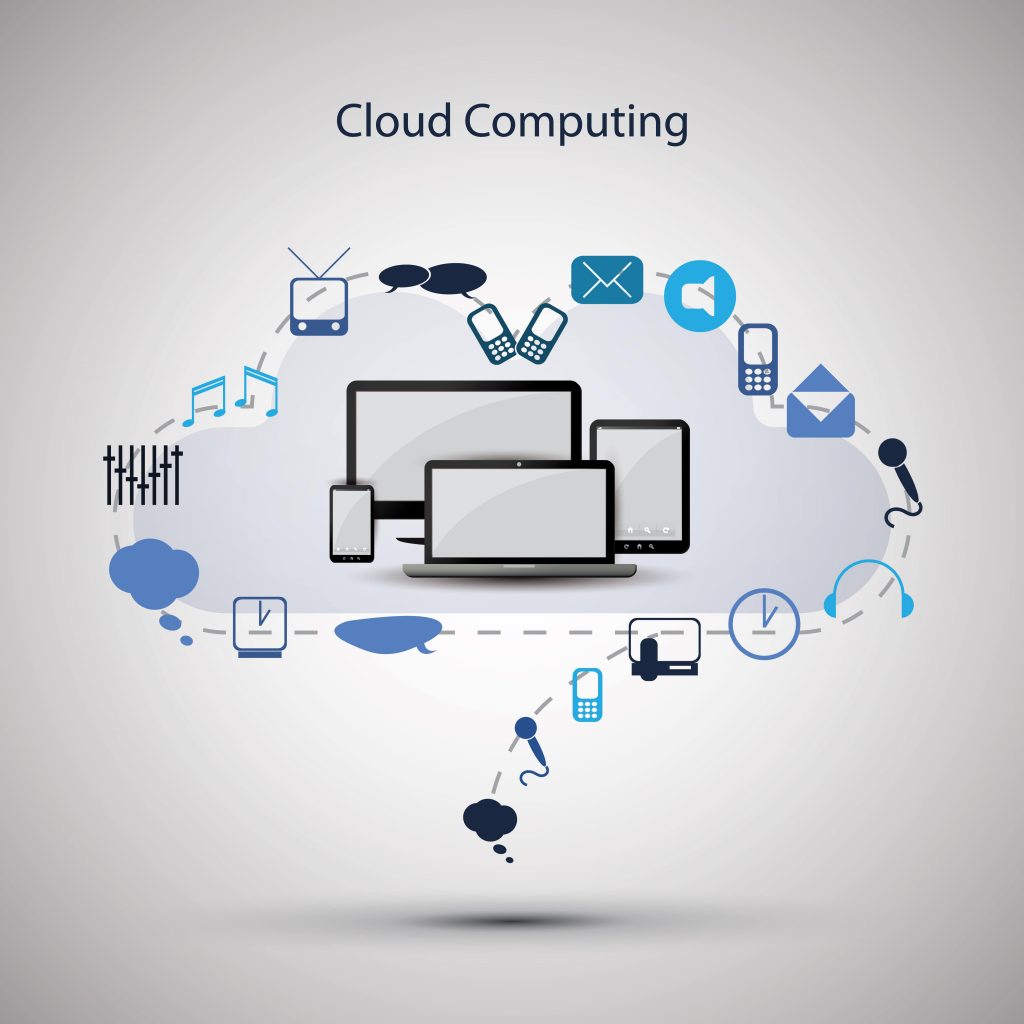Content
Likewise, the embedded system under test implements its control algorithms by outputting actuator control signals. The value of each electrically emulated sensor is controlled by the plant simulation and is read by the embedded system under test . There were also many special-purpose facilities for embedded system development and robotics. For an overview of embedded software see embedded system and software development models. In others, it is complicated enough to require a separate embedded system to retransmit data over connector and signal of a different standard.
They reach the desired levels of reliability and Mean Time Between Failures through redundancy rather than hot swapping or live insertion of blades. Risks are usually managed with the methods and tools of safety engineering practices. A life-critical system is designed to lose less than one life per billion hours of operation. Typical design methods include probabilistic risk assessment, combining failure modes and effects analysis with fault tree analysis. At Delkin, our rugged controlled storage devices are integral to embedded computing systems that require industrial grade memory solutions. Learn more about different flash memory options by contacting our product team today.
Other free operating systems that are commonly used in embedded systems include eCos, FreeDOS, FreeRTOS, NetBSD and OpenBSD. Other commercial embedded operating systems include LynxOS RTOS, OS-9, OSE, VxWorks, Windows CE and Windows XP Embedded. Some embedded systems include an operating system, which is referred to as an embedded operating system. It can be a very small systems that was developed specifically for use with embedded systems, or it can be a stripped down version of system that is commonly used on general-purpose computers. New designs of high performance embedded processors have more and more functions on a single chip to reduce space and power consumption. Are developed for some specific task rather than to be a general-purpose system for multiple tasks, they are typically of limited size, low power, and low cost. Embedded systems are widely used in various purposes, such as commercial, industrial, and military applications.
The embedded GPS devices allow people to find their current locations and destinations easily. Thus, they are gaining rapid momentum and becoming the most widely used navigation tools for automobiles. Protocol Packet Design Pattern – This design pattern offers a simplified buffering architecture for real-time embedded systems, implementing a single buffer that supports addition and extraction of the various protocol layers. A special-purpose computer system designed to perform one or a few dedicated functions, often with real-time computing constraints. In my article, I am going to tell you all the basic information, need to know about Embedded Systems. What would be the design parameters and constraints in designing an Embedded System? Like most network simulators such as ns-2, the PIECES simulator maintains a global event queue and triggers computational entities—principals, port agents, and groups—via timed events.
- Numerous microcontrollers have been developed for embedded systems use.
- Mobile phones can be considered both embedded computing systems and full computing systems.
- Networked embedded computing systems are controlled by a central network.
- “Embedded” reflects that these systems are often part of a larger system.
A good example of this is the combination of an Embedded HTTP server running on an embedded device . The user interface is displayed in a web browser on a PC connected to the device. Transportation systems from flight to automobiles increasingly use embedded systems.
Let’s dive into our discussion of embedded computer operating systems. While real life embedded systems have become a significant part of our lives, they are engineered to operate with minimal human intervention. Characteristics like compact size, simple design, and low cost make them a useful technology in industries like aerospace, automotive, healthcare, and even smart cities. Thus, they are one of the driving forces behind today’s digital, connected, and automated world.
Examples Of Embedded Systems
Since embedded computing systems are used in so many ways, it is not surprising that there are multiple design categories. Standalone systems don’t require a host system and simply need input and output lines—for example, music players are standalone systems. Real-time embedded computing systems adhere to time constraints, Integration testing such as the previously mentioned braking systems. Networked embedded computing systems are controlled by a central network. A home security system with multiple components is an example of a networked system. Lastly, mobile embedded systems are used for mobile communication devices, including tablets and smartphones.
Cincoze DI-1100 is a fanless embedded computer with an optional external fan – CNX Software
Cincoze DI-1100 is a fanless embedded computer with an optional external fan.
Posted: Mon, 13 Dec 2021 09:12:59 GMT [source]
All the electronic processing that exists in a car, in a camera, in a coffee maker or a washing machine are embedded systems. An “embedded DBMS” refers to a particular kind of database management definition embedded system system that is “lodged solidly into” a software application. As such, the user of the software application is not necessarily aware that there is an underlying DBMS involved.
A plane’s navigation system is an excellent example of a real time operating system. The main computer of an airplane that is interconnected with most of the control systems like engine, wing, safety, and pressure controls. So, it is specifically designed to operate inside a plane and help perform operations like takeoff, landing, and emergencies. Development in the design and implementation of the embedded operating systems have been driven by the need to control software applications that take advantage of swiftly advancing hardware. Whether you work in a restaurant, office, health practice, factory or other environment, your workplace is full of systems that are built with embedded devices, like elevators, printers, routers and point of sale systems. In brief, they can be found everywhere in our society — from vehicles and EV charging stations to vending machines, lottery ticket systems and digital signage to sophisticated medical equipment.
Overview Of Embedded Systems
But a calculator, for example, produces an output, i.e., a calculation, by itself, with some user input, of course. It constitutes a standalone embedded system because it requires no embedment within a broader system, unlike the ACC system. Now let’s move on to the embedded systems that can stand on their own, i.e., function without a host. Many ICs in embedded systems are VLSIs, and the use of the VLSI acronym has largely fallen out of favor. Very large-scale integration, or VLSI, is a term that describes the complexity of an integrated circuit . ULSI, or ultra-large-scale integration, refers to placing millions of transistors on a chip.

The expected growth is partially due to the continued investmentin artificial intelligence , mobile computing and the need for chips designed for high-level processing. A system on a chip contains a complete system – consisting of multiple processors, multipliers, caches, even different types of memory and commonly various peripherals like interfaces for wired or wireless communication on a single chip. SoCs can be implemented as an application-specific integrated circuit or using a field-programmable gate array which typically can be reconfigured. Today, a comparatively low-cost microcontroller may be programmed to fulfill the same role as a large number of separate components. With microcontrollers, it became feasible to replace, even in consumer products, expensive knob-based analog components such as potentiometers and variable capacitors with up/down buttons or knobs read out by a microprocessor. Although in this context an embedded system is usually more complex than a traditional solution, most of the complexity is contained within the microcontroller itself.
Numerous microcontrollers have been developed for embedded systems use. General-purpose microprocessors are also used in embedded systems, but generally, require more support circuitry than microcontrollers. Embedded systems programming instructions, referred to as firmware, are stored in read-only memory or flash memory chips, running with limited computer hardware resources. Embedded systems connect with the outside world through peripherals, linking input and output devices. An embedded system is a microprocessor-based computer hardware system with software that is designed to perform a dedicated function, either as an independent system or as a part of a large system. At the core is an integrated circuit designed to carry out computation for real-time operations. Often, the computer is relatively invisible to the user, without obvious applications, files, or operating systems.
For instance, your smart TV might contain an embedded operating system and a plethora of features as well as complexities. The more features, the more bugs and security vulnerabilities that must be managed.
Browse Definitions Net
These types of embedded systems are designed using 16 or 32-bit microcontrollers. C, C++, Java, and source code engineering tool, etc. are used to develop this kind of embedded system. Real-time embedded systems give the required output in a defined time interval. They are often used in medical, industrial and military sectors because they are responsible for time-critical tasks. In addition to the core operating system, many embedded systems have additional upper-layer software components. These components consist of networking protocol stacks like CAN, TCP/IP, FTP, HTTP, and HTTPS, and also included storage capabilities like FAT and flash memory management systems. If the embedded device has audio and video capabilities, then the appropriate drivers and codecs will be present in the system.

One of the earliest decision points in embedded systems design is whether the system will require real-time computing capabilities. Real-time computing describes the ability to react to inputs and deliver the prescribed output within a constrained time frame.
Sensor − It measures the physical quantity and converts it to an electrical signal which can be read by an observer or by any electronic instrument like an A2D converter. Connected − It must have connected peripherals to connect input and output devices. A system is an arrangement in which all its unit assemble work together according to a set of rules. It can also be defined as a way of working, organizing or doing one or many tasks according to a fixed plan. So we can say, in a system, all its subcomponents depend on each other. Latency in edge devices can have several sources, stemming from software, network issues or old hardware.

This type of embedded systems have lots of hardware and software complexities. You may require IPS, ASIPS, PLAs, configuration processor, or scalable processors. For the development of this system, you need hardware and software co-design & components which needs to combine in the final system.
Embedded systems do a very specific task, so it can’t be programmed to do different things. D-A converter (A digital-to-analog converter) helps you to convert the digital data fed by the processor to analog data. A-D converter (analog-to-digital converter) allows you to convert an analog signal sent by the sensor into a digital signal.
Characteristics Of Embedded Systems
Without an embedded system, robots would have to rely on external control or computing systems. This, in turn, can elevate the safety risks due to delay or failure in the connection link between the factory robot and its external computing system.

Medical equipment integrated with embedded operating systems automatically monitors bio constants, administers medications, and sends alerts to the staff in case the bio constants go above or below the threshold value. Thus, medical equipment can help doctors treat their patients, monitor their health, and save their lives. For instance, all mobile phones have an integrated embedded operating system software like Android or iOS that starts up when the phone is switched on. Without the OS, implementing an app into every single mobile phone with different hardware would have been a nightmare for developers. It allows them to bridge all the gaps and build a unified app specifically for the OS. The embedded operating system is also known as a real-time operating system in some cases, which we will discuss in another section. Factory robots are designed to perform high-precision tasks under dangerous work conditions.

